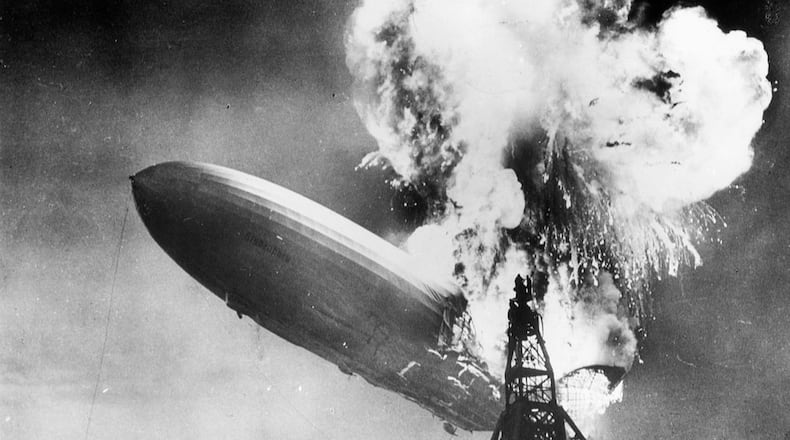Herb Morrison’s words and emotions remain powerful 80 years later.
The Chicago radio announcer described the final moments of the Hindenburg, the German airship that burst into flames over the Lakehurst Naval Air Station in New Jersey as it began its descent on May 6, 1937. Thirty-five of the 97 people on board and one person on the ground were killed."Oh, the humanity!" Morrison said, making broadcast history as he described the disaster.
For the first time in five years, the public on Saturday night will have access to the site where the Hindenburg crashed, NJ.com reported. Observers will get a one-hour window beginning at 5:30 p.m. to visit the site, Carl Jablonski, president of the Navy Lakehurst Historical Society, told NJ.com.
A ceremony honoring the who died as a result of the crash will start at 6:30 p.m. The featured speaker at the event will be Horst Schirmer, who flew on the Hindenburg when he was 5 years old.
Schirmer's father, Max, designed the aeronautics for the airship. Schirmer, now 85, rode in the 805-foot-long zeppelin during test flights in Germany a year before the Lakehurst disaster.
Col. Frederick D. Thaden, the commander of Joint Base McGuire-Dix-Lakehurst, and Jablonski will also offer remarks at the ceremony.
The ceremony will include a reading of the names of all 36 people who died — 13 passengers, 22 crew members, and one ground worker — and wreaths will be presented in honor of the fallen troops in Iraq and Afghanistan.
An exact cause of the disaster is still unknown, although a theory is a spark ignited the blaze after a guide wire snapped.
"A small flame became a big flame," Jablonski said.
It only took 34 seconds for the flames to spread from the rear to the front of the airship, Jablonski said.
The images of the Hindenburg going up in flames would be seen by people throughout the country. The disaster was the first ever to be captured on film and the first motion picture to go viral after the footage was distributed in newsreels and played in movie theaters all over the world, USA Today reported.
Morrison's words were not heard live, nor were they initially linked to the film shot by newsreel crews, Fox News reported.
Ron Simon, the senior curator at New York City's Paley Center for Media, says it was one of the first moments in media history that had a broadcaster reacting to something totally unexpected.
"It was one of the real moments in media history that had a broadcaster reacting to something totally unexpected," Simon told The Associated Press.
Morrison's voice was being recorded on a transcription disc as he described the airship's arrival, Simon said. The disc was running slowly, so his voice sounded higher when played back, the AP reported.
"It's burst into flames!" he shouted. "It's fire, and it's crashing!"
For about 40 minutes, Morrison described the final moments, pausing when emotions got the best of him, and interviewed witnesses. But his report wasn't heard until the next day.
Werner Doehner, 88, the last survivor from the ill-fated flight, was 8 years old when he and his parents, brother and sister boarded the Hindenburg on their way home from a vacation in Germany, People reported.
"Suddenly the air was on fire," Doehner told the AP in a telephone interview this week.
“[M]y mother took my brother and threw him out,” Doehner said. “She grabbed me and fell back and then threw me out. She tried to get my sister, but she was too heavy, and my mother decided to get out by the time the zeppelin was nearly on the ground.”
“I remember lying on the ground, and my brother told me to get up and to get out of there,” he said.
Doehner stayed in the hospital for three months before going to a hospital in New York City in August for skin grafts and was discharged in January 1938, People reported.
About the Author



